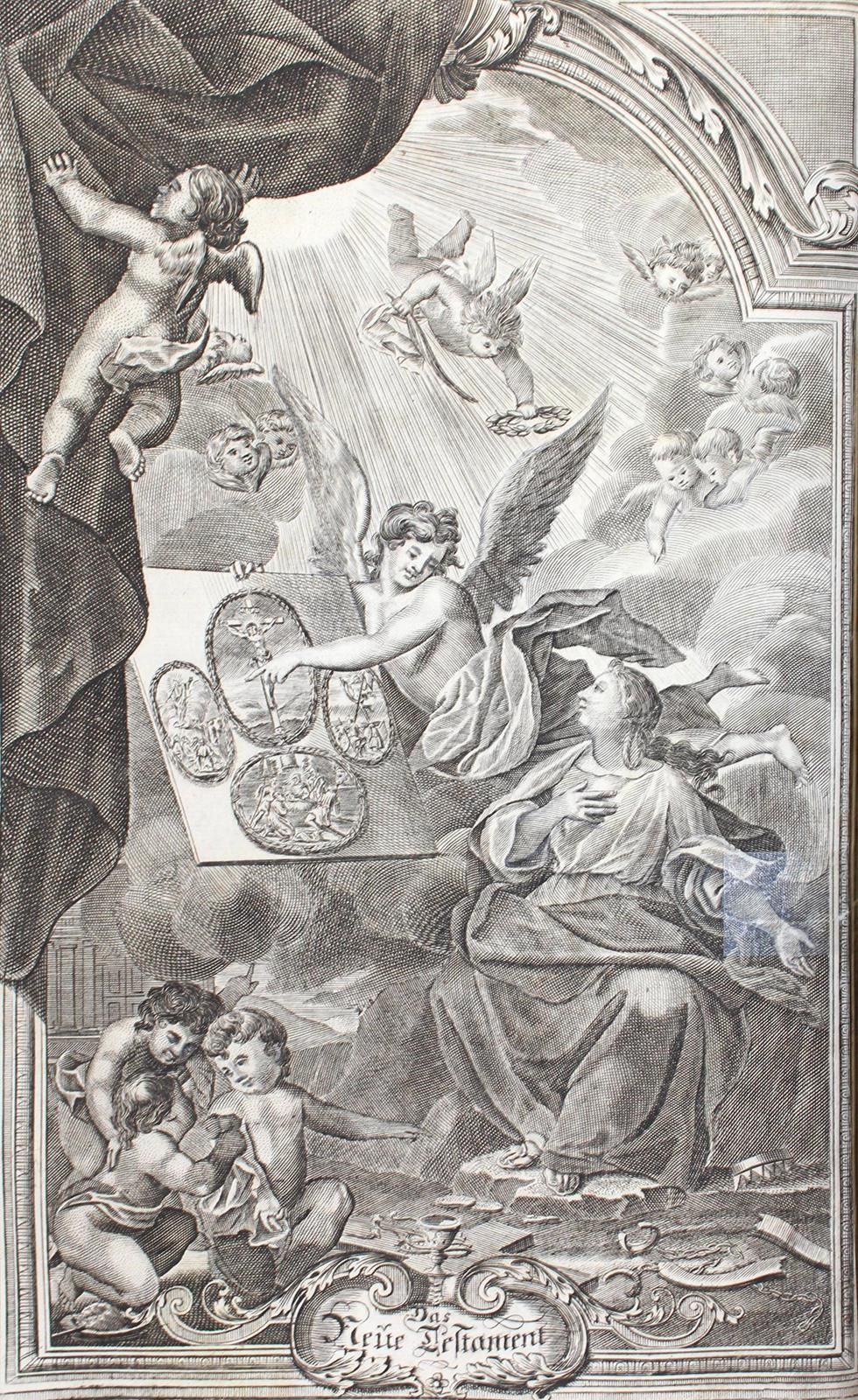Description
Biblia germanica.
Biblia, that is: The entire Holy Scripture of the Old and New Testament... ...by Doctor Martin Luther... Together with a preface by Johann Michael Dillherrn. Nbg., Endter 1733. Fol. With 2 gest. Titles, 4 whole. Engravings, 12 whole engraved portraits. (Electors and Luther), as well as numerous woodcuts in text. 48 pp., 1181 pp., 11 pp. Blind embossed. Pigskin printed boards of the time over wooden covers with 4 (instead of 8) corner mounts and 2 clasps. (V cover without corner mountings, wormholes, browned and rubbed, newly opened). Jahn p. 125 - 22nd Dilherr edition of 1733. The title engraving and the 'depiction' of Luther engraved by A. Nunzer. - Title-page with marginal faults and opened up, endpapers renewed (old inner mirror mounted), partly. marginal tears, browned in places a. fl.
You may also like
